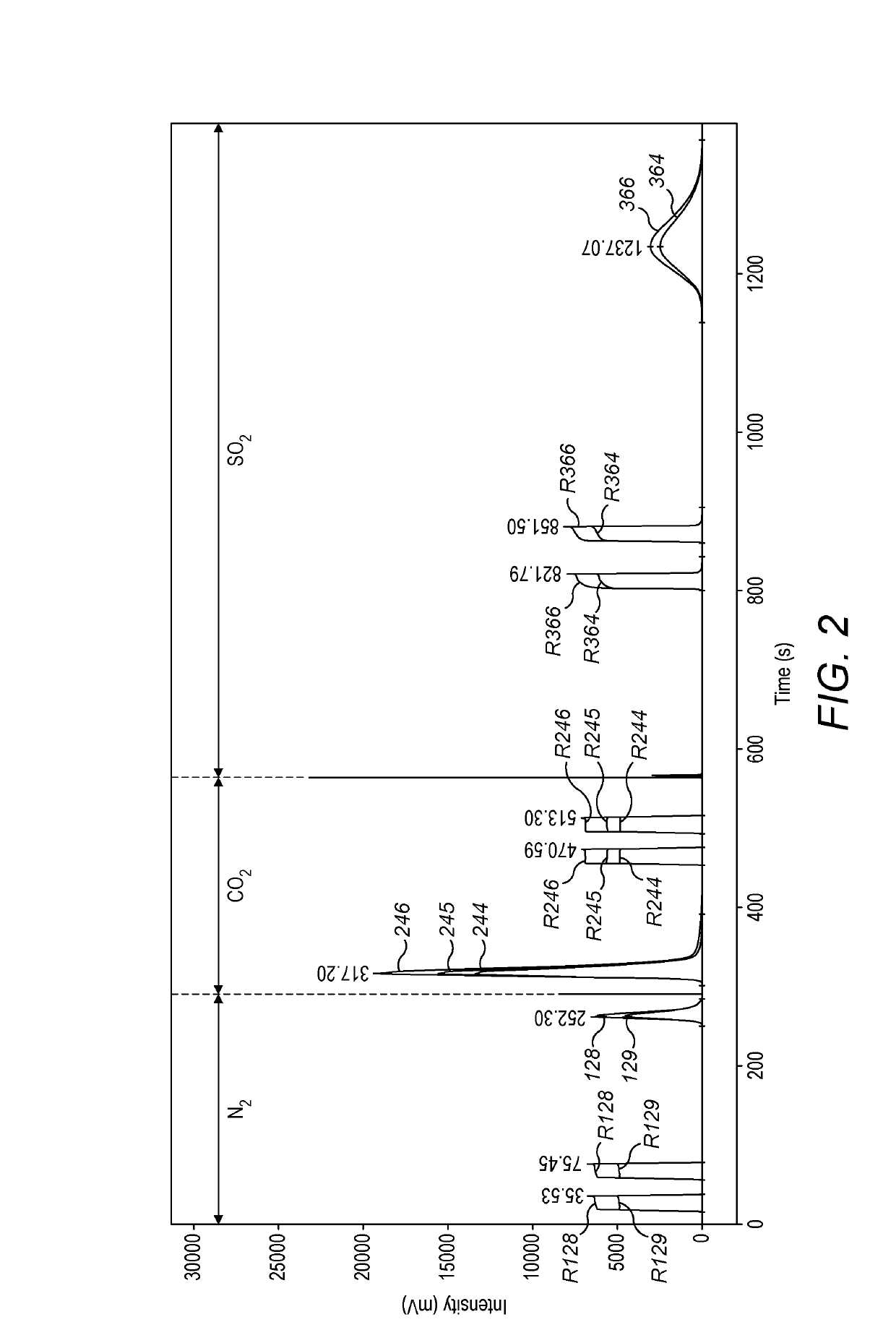Sample preparation apparatus and method for elemental analysis spectrometer
a sample preparation and elemental analysis technology, applied in the field of improved sample preparation apparatus for elemental analysis system, can solve the problems of difficult to resolve sub>2/sub> of each chemical substance in such systems, and affecting the quality of sample preparation, etc., to achieve accurate and precise analysis isotope ratio, increase sample throughput, and improve the effect of system productivity
- Summary
- Abstract
- Description
- Claims
- Application Information
AI Technical Summary
Benefits of technology
Problems solved by technology
Method used
Image
Examples
Embodiment Construction
[0065]Referring first to FIG. 3a, a highly schematic arrangement of a sample preparation section of an EA-IRMS in accordance with an embodiment of the present invention is shown. Those components common to FIGS. 1a and 3a are labelled with like reference numerals.
[0066]The sample preparation and combustion / reduction proceeds, in the embodiment of FIG. 3a, in the same manner as was described in the Background section above, in respect of FIG. 1a. To avoid unnecessary repetition, this part of the process will only be summarised here.
[0067]A sample (not shown in FIG. 3a) is weighed and placed in a combustible capsule that is sealed and placed into an autosampler carousel 10 positioned above a combustion furnace 20. The autosampler carousel 10 injects the sealed sample capsule into the combustion furnace 20 under the control of a system controller 200. As before, Helium may be supplied to the autosampler 10 as a purge gas, and combustion in the combustion furnace 20 may be carried out i...
PUM
| Property | Measurement | Unit |
|---|---|---|
| fixed temperature | aaaaa | aaaaa |
| fixed temperature | aaaaa | aaaaa |
| fixed temperature | aaaaa | aaaaa |
Abstract
Description
Claims
Application Information
 Login to View More
Login to View More - R&D
- Intellectual Property
- Life Sciences
- Materials
- Tech Scout
- Unparalleled Data Quality
- Higher Quality Content
- 60% Fewer Hallucinations
Browse by: Latest US Patents, China's latest patents, Technical Efficacy Thesaurus, Application Domain, Technology Topic, Popular Technical Reports.
© 2025 PatSnap. All rights reserved.Legal|Privacy policy|Modern Slavery Act Transparency Statement|Sitemap|About US| Contact US: help@patsnap.com



